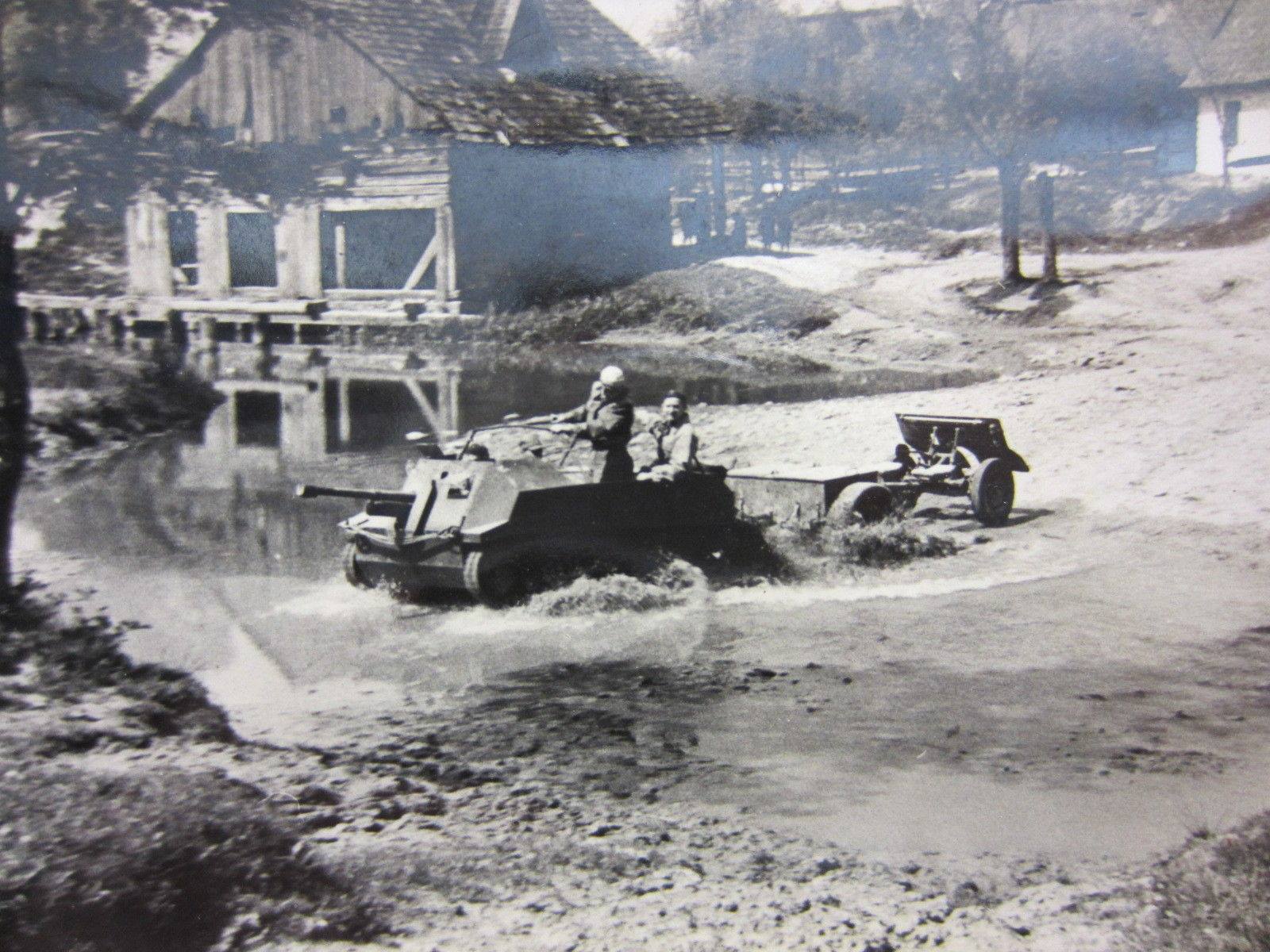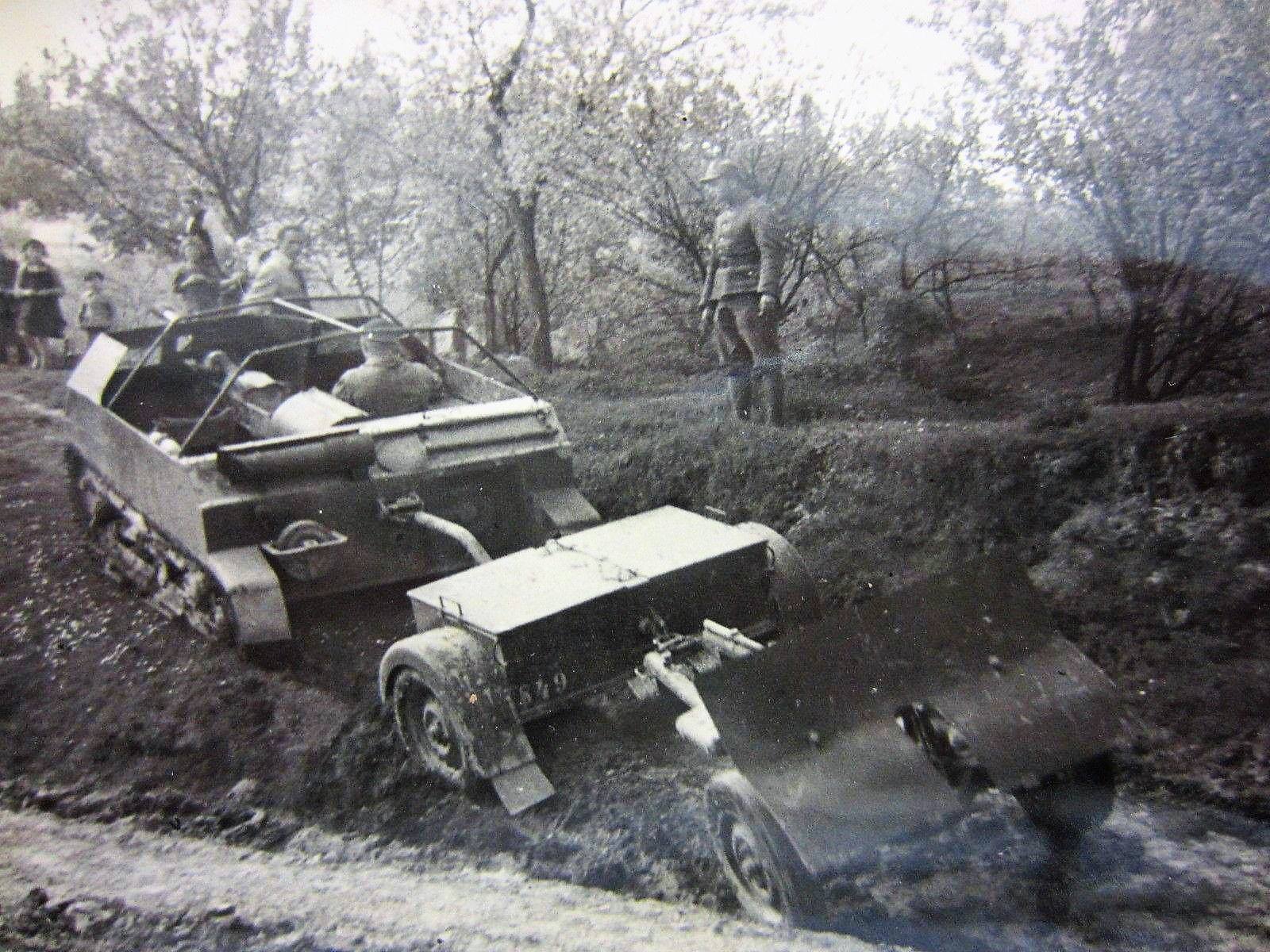This is the Polish TKS-D tankette, the heaviest of the TKS series. Tankettes as a whole were a fad in the 1920s and early 1930s – they were marginally protected (anything heavier than standard rifle bullets would go right through) but they could carry a machine gun and – most importantly – were really cheap to make. Their reliability was usually not great and they couldn’t withstand much punishment. The Polish were not the only ones using this type of vehicles but they did use the armed variants in combat a lot – sometimes quite effectively.
Standard Polish TKS tankettes (TKS was – as usual – based on Carden Loyd design) were armed with a machinegun or in some cases a 20mm cannon (sufficient against pretty much any early German armor, including the Panzer IV!), but the TKS-D was something a bit different – a light tank destroyer built on TKS chassis, armed with a 37mm Bofors gun (roughly on par with the German 37mm PaK 36). The vehicle was rather front-heavy, but the upside was that the gun could elevate to +13 and depress to -9 degrees (traverse was 24 degrees to each side). It weighed approximately 3,1 tons and could go as fast as 40 km/h (but anything above 15 km/h was unbearable for the crew). It was powered by a 46hp Polski Fiat 122B engine.
Two prototypes were built in April 1937 and were trialed until 1938 at Modlin proving grounds. Trials discovered a large number of problems with the vehicle, including poor off-road capabilities (the vehicle was REALLY front heavy with poorly placed center of gravity), abysmal crew comfort and poor reliability, which is why the mass production never took off.
In late 1938, both prototypes were atteched to the 10th Motorized Cavalry Brigade where they remained until 1939. Both prototypes were used against the German invasion in 1939 but their final fate is unknown.



“TKS was – as usual – a licensed copy of the Carden Loyd tankette” – that might be a rather broad definition of ‘licenced copy’? By the time tk-3 rolled out, there’s been so many alterations to the original construction that the tankette wasn’t really resembling it’s predecessor anymore.
Yeah, you’re right, maybe that’s worded incorrectly. In this case the correct wording would probably be “based on Carden Loyd design” – the “as usual” refers to the number of parties that licensed it and produced modified versions (there were shitloads).
How about writing an article about Carden Loyd tankette and its variants? We’ll all want to read about it.